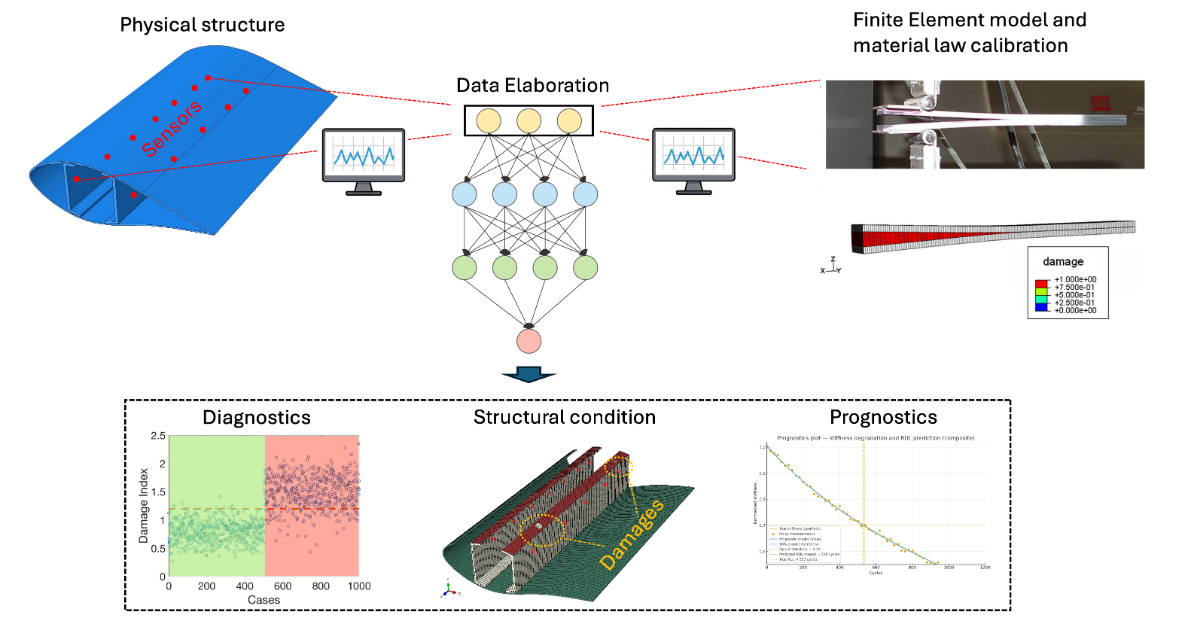FEM-Supported and Embedded Sensing-Enhanced Health Monitoring of Composite Structures
A special issue of Sensors (ISSN 1424-8220). This special issue belongs to the section "Fault Diagnosis & Sensors".
Deadline for manuscript submissions: 20 August 2026 | Viewed by 129

Special Issue Editors
Interests: composites; damage mechanics; structural health monitoring; impact mechanics; fatigue
Interests: structural health monitoring; manufacturing technology; composites; smart materials; ageing; fatigue and fracture mechanics
Special Issues, Collections and Topics in MDPI journals
Special Issue Information
Dear Colleagues,
The structural integrity of composite materials is a critical issue for safety, since certain types of damage, such as delamination, are almost undetectable through visual inspection. Structural Health Monitoring (SHM) systems address this challenge by integrating various types of sensors—such as fiber optic sensors and piezoelectric transducers—into a structure to monitor its integrity through strain measurements. Advanced data processing algorithms are developed to detect and localize potential anomalies and to predict the remaining useful life (RUL) of a component.
The continuous advancement of Finite Element Method (FEM) techniques enables physically based reliable models for residual strength and damage propagation in composite structures. These models play a crucial role in training Machine Learning (ML) algorithms for damage identification, load and shape reconstruction, residual strength, and RUL prediction. They provide the foundation for constructing digital twins, virtual replicas of physical structures that continuously integrate sensor data to assess performance and degradation in real time.
This Special Issue encourages authors to submit high-quality theoretical and experimental papers demonstrating how advanced FEM techniques, coupled with ML techniques, are used to support SHM systems for diagnostics and prognostics in damage-tolerant composite structures and the relevant impact on their maintenance. Such a topic aligns with the objectives of Sensors, exploring how FEM-based models and embedded sensing can jointly enhance anomaly detection and RUL prediction.
Dr. Alessandro Airoldi
Prof. Dr. Giuseppe Sala
Guest Editors
Dr. Pietro Ballarin
Guest Editor Assistant
Manuscript Submission Information
Manuscripts should be submitted online at www.mdpi.com by registering and logging in to this website. Once you are registered, click here to go to the submission form. Manuscripts can be submitted until the deadline. All submissions that pass pre-check are peer-reviewed. Accepted papers will be published continuously in the journal (as soon as accepted) and will be listed together on the special issue website. Research articles, review articles as well as short communications are invited. For planned papers, a title and short abstract (about 250 words) can be sent to the Editorial Office for assessment.
Submitted manuscripts should not have been published previously, nor be under consideration for publication elsewhere (except conference proceedings papers). All manuscripts are thoroughly refereed through a single-blind peer-review process. A guide for authors and other relevant information for submission of manuscripts is available on the Instructions for Authors page. Sensors is an international peer-reviewed open access semimonthly journal published by MDPI.
Please visit the Instructions for Authors page before submitting a manuscript. The Article Processing Charge (APC) for publication in this open access journal is 2600 CHF (Swiss Francs). Submitted papers should be well formatted and use good English. Authors may use MDPI's English editing service prior to publication or during author revisions.
Keywords
- finite elements
- structural health monitoring
- prognostics
- machine learning
- digital twin
- composite laminates
- fracture mechanics
- life cycle management
Benefits of Publishing in a Special Issue
- Ease of navigation: Grouping papers by topic helps scholars navigate broad scope journals more efficiently.
- Greater discoverability: Special Issues support the reach and impact of scientific research. Articles in Special Issues are more discoverable and cited more frequently.
- Expansion of research network: Special Issues facilitate connections among authors, fostering scientific collaborations.
- External promotion: Articles in Special Issues are often promoted through the journal's social media, increasing their visibility.
- Reprint: MDPI Books provides the opportunity to republish successful Special Issues in book format, both online and in print.
Further information on MDPI's Special Issue policies can be found here.








